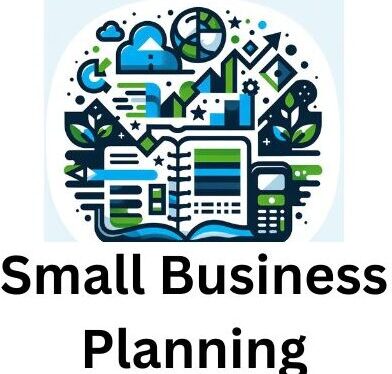
Crafting a business strategy without customer input? That’s like cooking without tasting the food first. Surveys and focus groups are your taste testers, helping you fine-tune your product or service to perfection. Their power lies in providing a snapshot of what your audience truly desires, needs, and feels.
Surveys deliver great quantitative data, perfect for identifying patterns in customer behavior or preferences. They’re like throwing a net into the sea to catch a wide array of insights. On the flip side, focus groups offer qualitative insights and are all about diving deep into the minds of a select few. It’s about understanding emotions, motivations, and reactions in a group setting.
Market success hinges on these two tools. By engaging directly with customers, you’re not just gathering data – you’re building a brand that’s tuned in to its audience. Success isn’t about guessing what works; it’s about knowing it. Engaging with your audience through surveys and focus groups lets you test assumptions and navigate your way to a business strategy that’s grounded in real-world feedback and insights.
Designing Effective Surveys: Do’s and Don’ts
When it comes to surveys, the magic lies in the questions you ask. Start by asking yourself, what exactly do you want to learn? Keeping your objectives clear and simple makes for a survey that’s easy for respondents to tackle and for you to analyze later.
Constructing questions can feel like walking a tightrope. Closed-ended questions with predefined answers make data analysis a breeze, but don’t shy away from adding a mix of open-ended questions to gather deeper insights. Remember, clarity is your best friend—avoid jargon and make sure every question is straightforward and unambiguous.
A common pitfall is making your survey a marathon no one wants to run. Stay mindful of length. Surveys that are too long are often abandoned midway. Striking a balance between depth and brevity is key. Focus on what’s essential and let go of nice-to-know questions that might bog down response rates.
Boosting participation can be as simple as offering an incentive. Small rewards or entries into prize draws can entice more people to complete your survey, giving you a richer pool of data to work with.
Ensuring high response rates also requires making sure your survey is accessible and user-friendly. Consider mobile users when designing your survey layout. If they can easily read and respond on any device, you’re good to go.
Exploring the World of Focus Groups
Focus groups are like a backstage pass to the minds of your customers, offering a unique peek into their opinions and thought processes. The key is moderation. Being a great moderator is a bit like being a host at a party – keep the conversation flowing, ensure everyone gets a chance to speak, and know when to steer the discussion back on track.
Choosing the right participants is your first step to success. Aim for diversity, but ensure your group reflects the target demographic for your product or service. A well-chosen group means the insights are more likely to be relevant and actionable.
Running a focus group is full of challenges, but each one comes with a workaround. Avoid groupthink by encouraging diverse opinions. Ask open-ended questions that allow participants to elaborate, and don’t be afraid to prompt quieter members for their views.
Preparation can’t be overstated. Have your questions ready, but be flexible. Sometimes the best insights come from unexpected directions, and a pre-arranged plan should never limit organic discussion.
And lastly, don’t forget about the location. A comfortable and neutral setting helps participants feel at ease, which often leads to more honest and open communication. When everyone feels relaxed, the real magic happens.
Harnessing Data for Actionable Insights
Data is like a treasure chest, but it needs a proper map to unlock its value. Once your surveys and focus groups are completed, it’s time to transform raw data into strategies that drive your business forward.
A mix of qualitative and quantitative analysis gives you a well-rounded view of your audience. Quantitative data offers measurables you can count on, like percentage of satisfaction or preference trends. On the flip side, qualitative insights from focus groups provide the ‘why’ behind the numbers.
An effective focus group can be formed from your existing customer base. A good CRM system will give you the information needed to select a group of participants, usually 6 – 10. One of the best CRM systems I nave found is Pipedrive. It has a good level of sophistication and is cost effective. If you would like additional information about Pipedrive please click on the link.
Turning numbers into strategies involves identifying patterns and trends that reveal what your customers truly value. Dive into the details but keep an eye on actionable trends that can guide your next steps.
Data visualization tools can be your best friend here. Charts, graphs, and other visuals help in illustrating findings in a way that’s easy to understand and share, making communication across your team smoother.
Finally, involve your team in the analysis process. The more perspectives you have interpreting the data, the better. Diverse viewpoints can spot opportunities or pitfalls that a single lens might miss, leading to more comprehensive business strategies.
Ethical Considerations and Long-term Engagement
Respecting your participants isn’t just ethical; it’s smart business. Ensuring informed consent and maintaining confidentiality isn’t just about ticking boxes. It’s about showing that you value their trust and their insights.
Building genuine trust with your customers transforms them from one-time respondents into long-term brand advocates. Regularly updating them about how their input shaped your product or service demonstrates that you truly listen.
Feedback loops are an ongoing dialogue. Inviting customers to the table through regular surveys and focus groups keeps the conversation alive and keeps your business growing. Customers appreciate seeing their suggestions come to life, fostering loyalty.
Consistency in your communication strategy is key. Make it a habit to reach out for feedback regularly, not just when there’s a problem. This promotes a positive relationship with your audience, who feel valued and heard.
In the end, the focus on ethical practices and customer engagement isn’t just about immediate returns. It’s about sustaining a legacy of goodwill and innovation that keeps your brand thriving.
Here’s a little transparency: Our website contains affiliate links. This means if you click and make a purchase, we may receive a small commission. Don’t worry, there’s no extra cost to you. It’s a simple way you can support our mission to bring you quality “Business Planning content.”

“Great article! I appreciate how you highlighted the complementary roles of surveys and focus groups in building an effective business strategy. One question that came to mind—how do you balance the insights from both when they sometimes conflict? For instance, surveys might reveal broad preferences, while focus groups offer deeper but more subjective opinions. How do you prioritize or merge these insights to create a cohesive and actionable strategy without losing sight of your audience’s true needs? Would love to hear your perspective on this!”
Thanks for the comment.
I believe that focus groups offer a broader idea of the topics being discussed and I would lean heavier on the opinion of the group. I believe that a discussion of a topic by several group members will provide broader insights than someone answering questions on a survey,
This article clearly describes the importance of surveys and focused groups, some people may thing surveys are a trivial issues or not important but in order for you to start a successful business or introduce new products in your store, survey are important they are like the back bone of the market. This article show some of the key things you need to consider for an effective strategies.
Thank you for featuring roles on surveys and Focused groups. I believe based on my intake that creating a focused group after a survey is effective for a long term engagement.